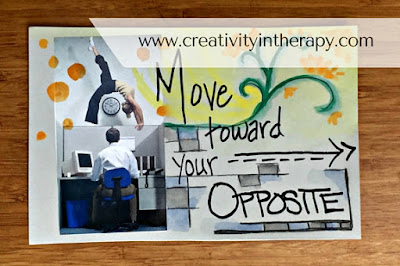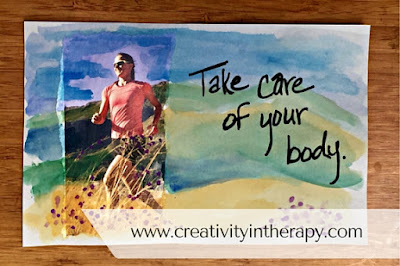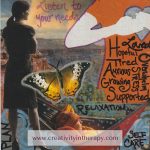
Coping skills…they are so essential to work on in therapy but it can sometimes be hard to know how best to approach this with clients. Some people seem to naturally learn positive ways to cope with the stresses and challenges in their life. Others muddle through, not quite aware of what they are doing to manage and what is really working. And others get stuck in a pattern of negative coping that they find hard to change.
Seeking Safety is an evidence-based practice (EBP) that focuses on helping adults and adolescents with trauma and substance abuse to learn more positive coping, build healthier relationships, and heal from the trauma. I was fortunate to be trained in this model while doing agency work in California and it was one of the EBPs that Department of Mental Health in Los Angeles County was encouraging us to use with clients. While some people dislike Seeking Safety for it’s here-and-now focus (there is not a component about exploring the past trauma and the model says that people do not need to talk about the trauma in order to recover), I’ve found it to be very helpful both as a framework for clients who are resistant to exploring past trauma and as a source of great material for helping various clients that need to improve their coping abilities. (If you want to learn more, you can get the manual on Amazon and learn how to use Seeking Safety in your own practice.)
The “Safety” module of Seeking Safety is focused on introducing clients to the idea of safe vs. unsafe coping and also gives a huge list of safe coping skills. This is a handout that I now use with a lot of my clients. Teens especially seem to struggle with thinking about new ways to cope with problems. They also have trouble at times with recognizing the positive coping that they are already doing in their life. One of the activities that I do often with my clients is to read over the Seeking Safety coping skills list together, having them check the skills that they already do and having them star the skills that they want to work on. We then talk about making a commitment to work on one or two of these skills before the next session.
While this approach is often helpful, it is sometimes boring or overwhelming to try to go through the whole list. In addition, I sometimes want a way to revisit the skills to encourage clients to think more specifically about what they are needing to focus on at this moment in their life.
Being an art therapist, I’m also always trying to think of creative or artistic ways to approach and reinforce the material we cover in session. This is not always possible with an evidence-based practice, but Seeking Safety is one of the models that allows for some flexibility in implementation. I want to integrate art therapy as a way to engage otherwise resistant client, encourage creativity, and provide another pathway for exploring and focusing on the material.
Here is one of the creative interventions that I’ve done in my teen group therapy that integrates the safe coping skills list.
I printed out the Seeking Safety list of safe coping skills and then cut it up so that there is one coping skill on each slip of paper (note: you can use the original list from the book, but I have typed it up and made a few changes so that it is more applicable to all teens, not just those with trauma and substance abuse).
The group members then read and passed around the coping skills with the direction to choose one coping skill that they need to focus on this week (although some have wanted to choose more than one, which is fine). After selecting their coping skill, the group members then each created a piece of art in response to their focus coping skills.
For some, this was just an opportunity to play and have fun with creativity, for others the art was a way to visualize and reinforce how they would use the coping skill. We talked some as a group about how they might use that coping skill during the coming week and then checked in at the next group session about how it went.

Of course, you don’t have to be in group therapy to do this activity; it would also work well in an individual session. Variations could include doing a collage about several coping skills to focus on or using the coping skills as a focus for a daily journal or art journal.
Because it’s important for art therapists to try out and experience the directives that they are giving their clients, and to create some sample art work for this post, I spent some time doing art responses for four coping skills that I would like to focus on right now in my life.

1. Move toward your opposite. I love the juxtaposition of figures in the work environment in the office. For me, it reminds me to focus on the two sides of my work – creativity/spontaneity/trusting the process vs. organization/planning/business.

2. Pace yourself. This is one of my favorite coping skills on the list. I love the reminder that sometimes we need to slow ourselves down and sometimes we need to push ourselves to go faster. The road will be long and we don’t always know where it’s going. There’s no benefit in trying to sprint; just keep moving forward.

3. Focus on now. This is an eternal struggle for me! I am always wanting to dream about and plan for the future or trying to accomplish two things at once. Isn’t it the constant refrain of all parents that we need to stop and appreciate each present moment because it will all go by so fast? Knowing that it’s true doesn’t always make it easy to do, but it’s important to me to make sure I am focused on the present moment and the now, whether that is in playing with my child, spending time with my husband, or appreciating the beauty of nature around me.

4. Take care of your body. Self-care is so important, and running is something that I try to make a priority in my life. Lately I haven’t been doing so well with this, so I know that I need to focus on it right now. My emotions are so much more in control when I take time to exercise.
Please share in the comments! How do you address coping skills in therapy with teens? Do you use Seeking Safety in your work as a therapist and do you have any creative ways to reinforce the material?
Carolyn Mehlomakulu is a Licensed Marriage and Family Therapist and Registered Art Therapist in Austin, Texas who works with children, teens, and families. For more information about individual therapy, adolescent and child counseling, family therapy, teen group therapy, and art therapy services, please visit: www.therapywithcarolyn.com.
This blog is not intended to diagnose or treat any mental health conditions. All directives, interventions, and ideas should be used by qualified individuals within the appropriate bounds of their education, training, and scope of practice. Information presented in this blog does not replace professional training in mental health, psychotherapy, counseling, art therapy, or play therapy. Although anyone can have a healing experience with art, art therapy requires the direction of a trained art therapist.
This blog includes affiliate links (see full disclosure here). If you’d like to help support the blog without any extra cost to you, please click through on Amazon links and shop as you normally would. Your support is greatly appreciated!





Dear Carolyn,
I had just discovered your website through Pinterest. Very informative and interesting! I work in the mental health sector and we try to use sports and expressive arts therapies as intervention as well. In Singapore. Your ideas help 🙂 Thanks!
Hi, Thank you for your blog. It is great and I've used a bunch of your ideas and resources in my art therapy work at a children's hospital. I requested the book you mentioned from our medical library but in the interim, would you mind sharing the safe list of coping skills please? It sounds great! If not, thank you anyway. Keep up the great work! Regards, Heather Stemas, M Ed, ATR-BC, LCPAT